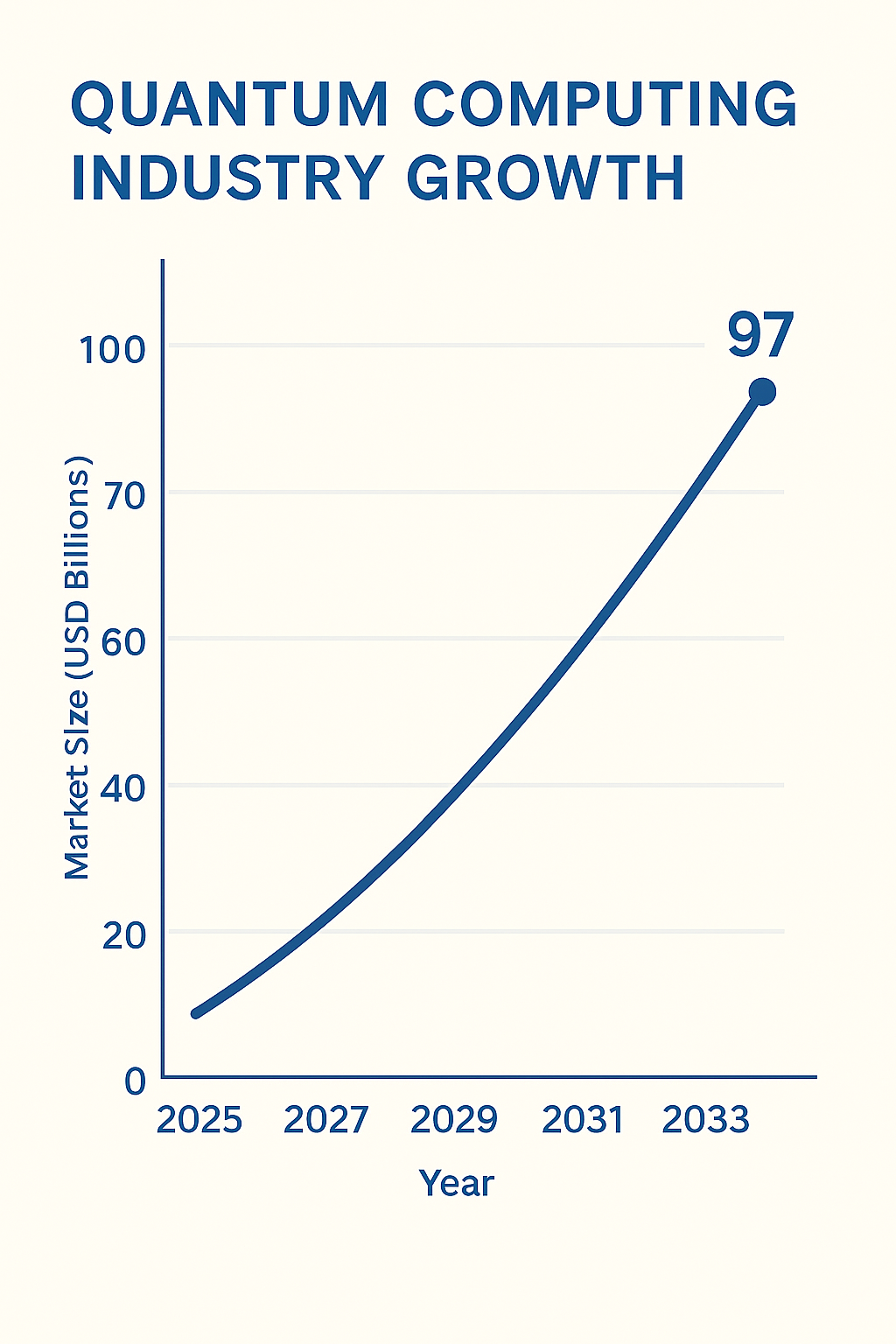
Quantum Computing Technologies
Quantum computing has rapidly evolved from a theoretical concept into one of the most promising technologies of the 21st century. By leveraging the unique principles of quantum mechanics—superposition, entanglement, and interference—quantum computers are expected to solve problems far beyond the reach of classical computers. Below, we explore the types of quantum computing technologies, the leading companies developing them, hardware manufacturers, and current demand sources.
Quantum Computing Industry Market Growth Projections
The market size is projected to reach $97 billion by 2035.
Between 2025 and 2035, the quantum technology market—encompassing computing, communication, and sensing—is projected to experience rapid expansion. McKinsey & Company forecasts the market could reach $97 billion by 2035, with quantum computing taking the largest share, and by 2040, the total sector value may climb to $198 billion. Other analyses suggest the quantum computing segment alone could grow from $2.46 billion in 2023 to $50 billion by 2035, representing a robust CAGR of roughly 28.5%. The Quantum Insider projects the broader quantum sector could generate as much as $1 trillion in economic value by 2035, alongside the creation of approximately 840,000 new jobs, signaling both substantial economic impact and employment opportunities in the decade ahead.

Types of Quantum Computing Technologies and Key Players
| Technology | Definition | Pros & Cons (including financial relevance) | Key Companies / Institutions | Commercialization Stage |
|---|---|---|---|---|
| Superconducting Qubits | Uses superconducting circuits cooled near absolute zero to represent quantum states. | Pros: Proven scalability in fabrication (similar to semiconductor industry), strong ecosystem (Google/IBM), relatively short-term ROI potential. Cons: High CAPEX due to cryogenic systems, short coherence times → higher error correction cost, requires large R&D budgets. | Google, IBM, Rigetti, Alibaba Cloud | Most advanced; cloud-accessible systems already in market |
| Trapped Ions | Employs charged atoms (ions) trapped in electromagnetic fields, manipulated with lasers. | Pros: Very high fidelity operations → attractive for finance optimization, drug design. Longer coherence lowers OPEX. Cons: Scaling requires vacuum chambers & laser arrays. Limited throughput may slow ROI. | IonQ, Quantinuum, AQT | Commercial prototypes; used by research and enterprises |
| Photonic Quantum Computing | Uses photons traveling through optical circuits (waveguides, beam splitters, phase shifters). | Pros: Room-temperature operation reduces infra cost, synergy with telecom (fiber optics). Cons: Difficult multi-photon control, ROI uncertain, dependent on breakthroughs in photon sources/detectors. | Xanadu, PsiQuantum, ORCA Computing | Early stage; pilots in quantum communication |
| Topological Qubits | Based on quasiparticles (Majorana fermions) in topological states, resistant to noise. | Pros: Could cut error correction cost dramatically, long-term disruptive potential. Cons: Extremely early stage, experimental only → speculative investment. | Microsoft (StationQ), Delft Univ., Copenhagen Univ. | Experimental; no commercial deployment |
“Detailed explanations of each technology in the trapped-ion and superconducting qubit supply chains will be covered in upcoming posts.”